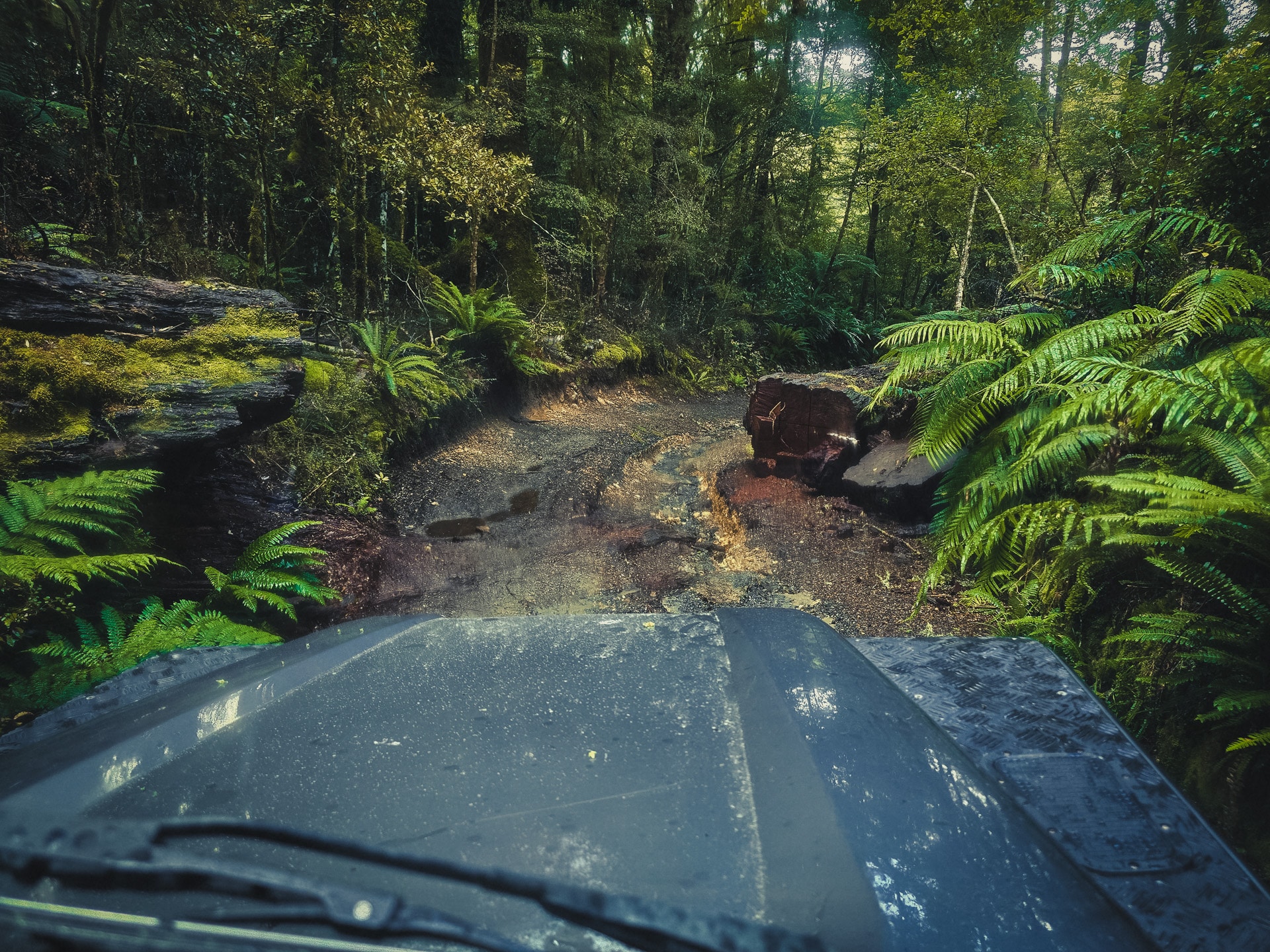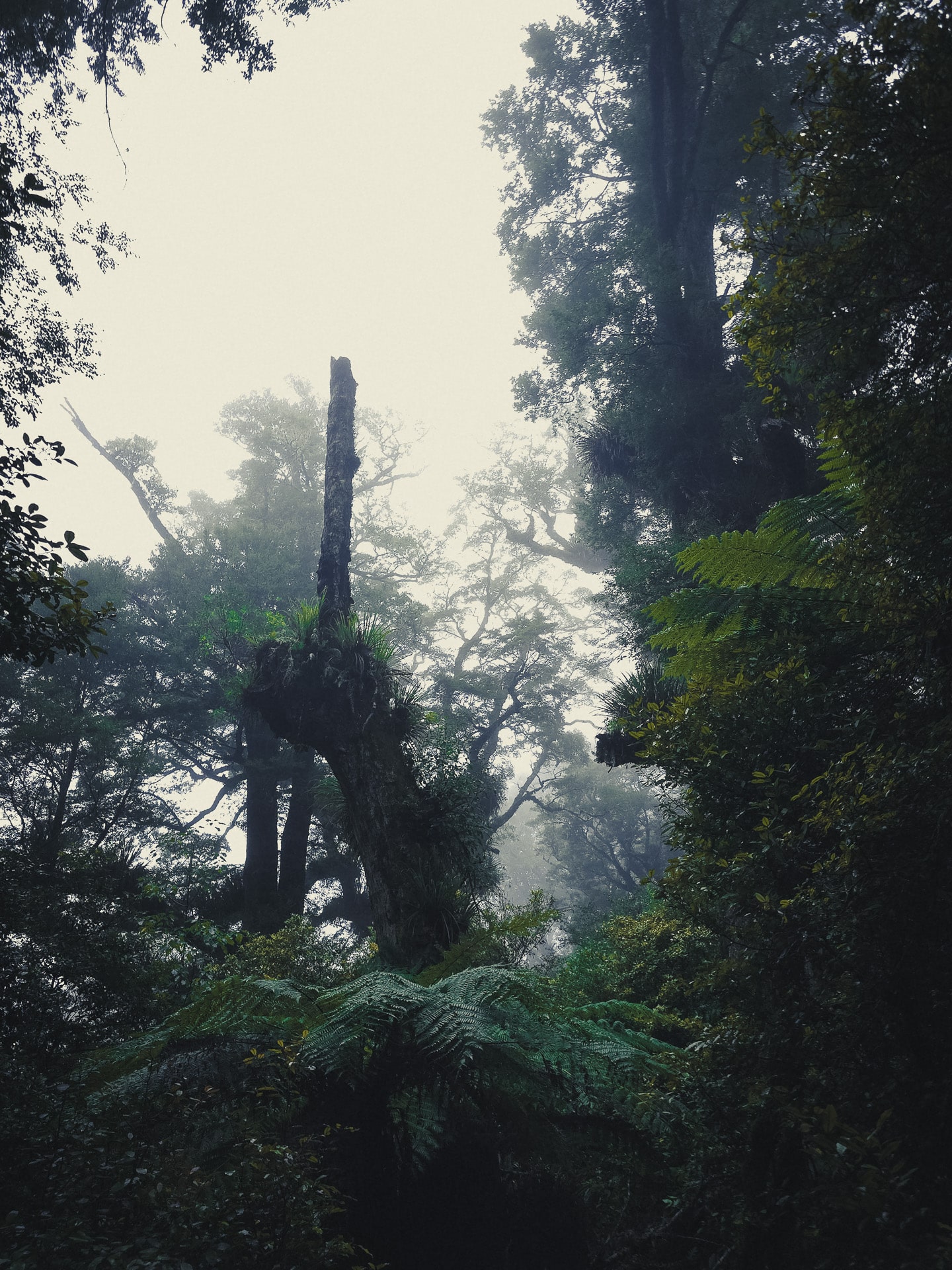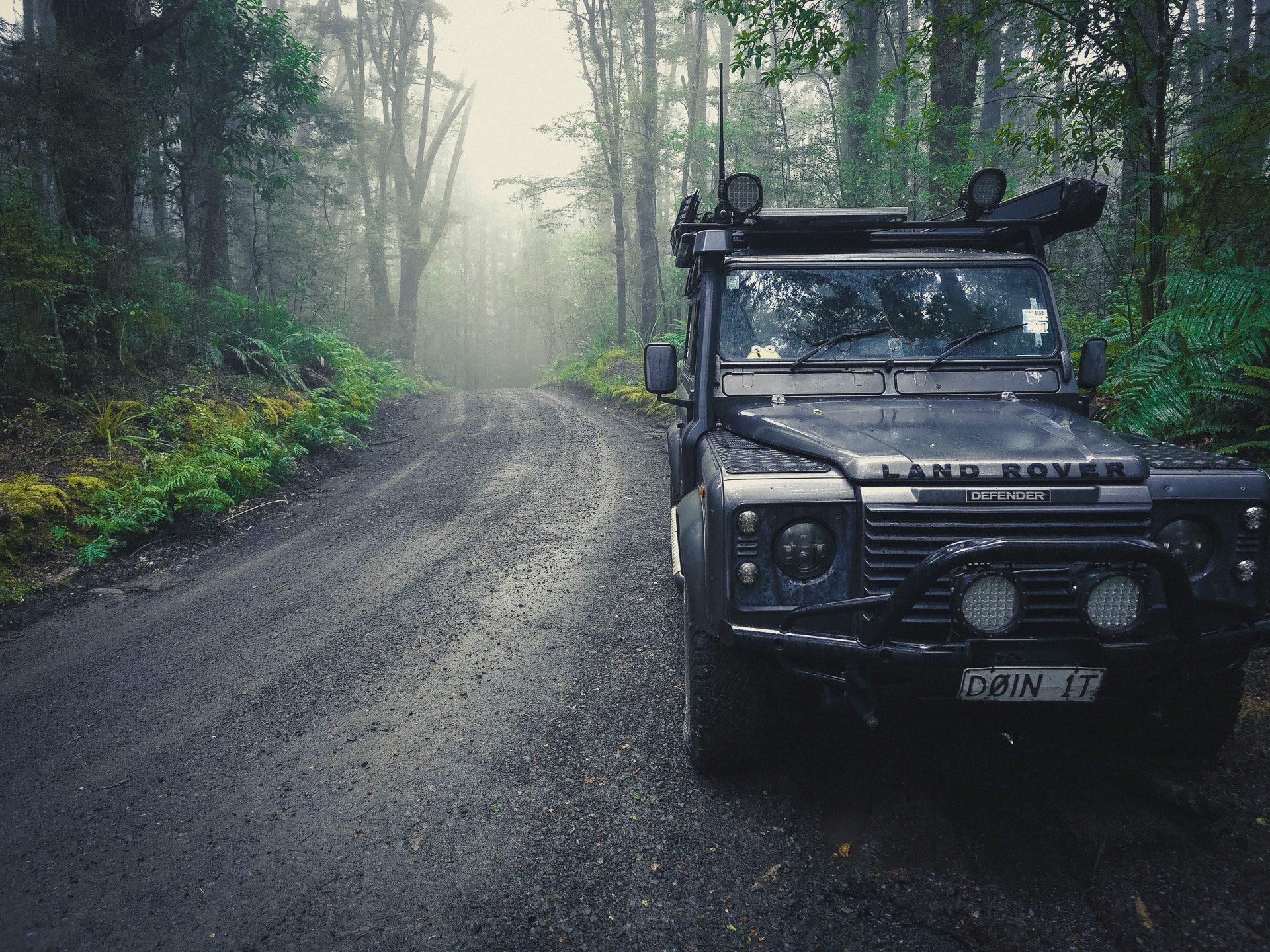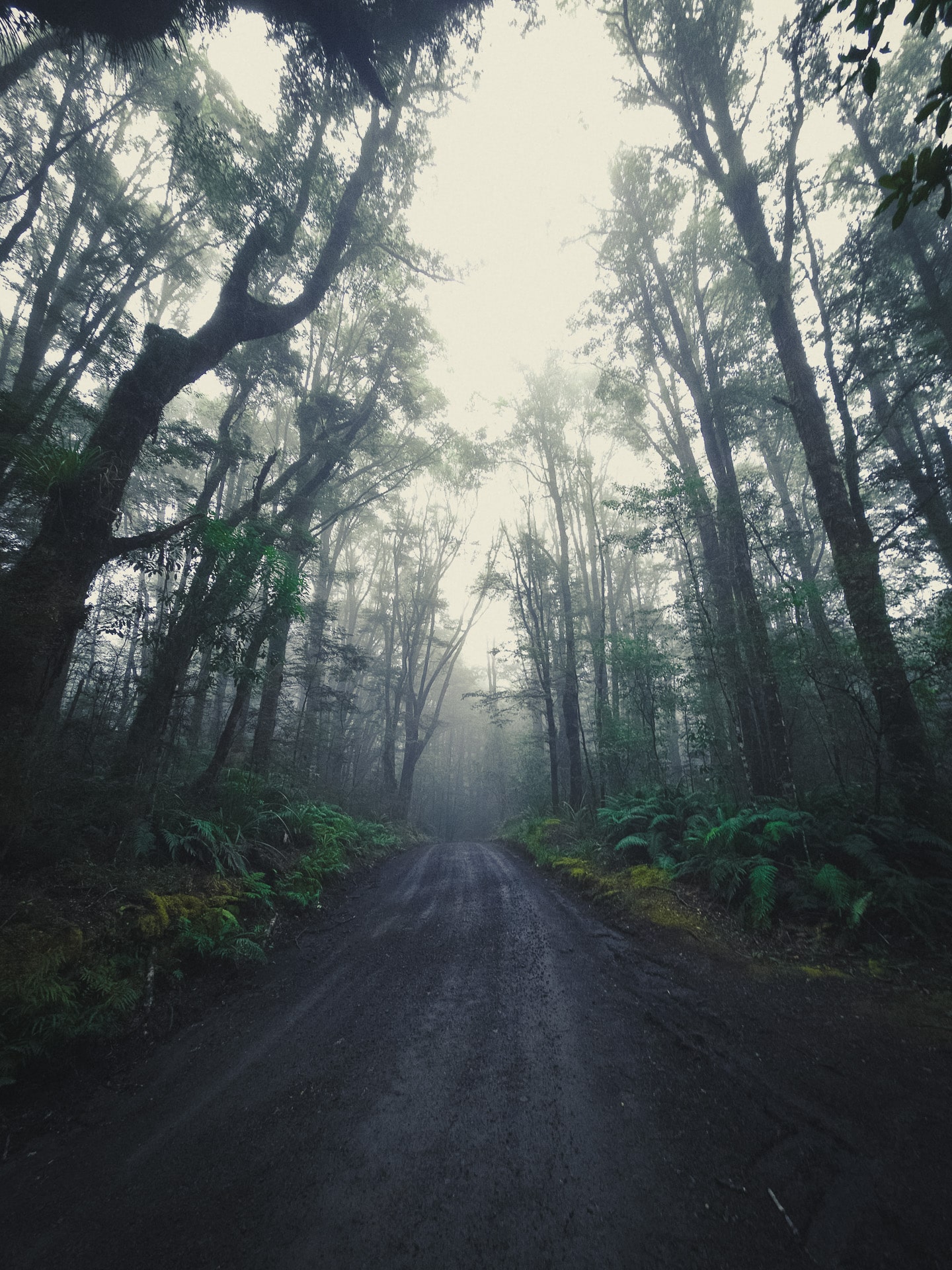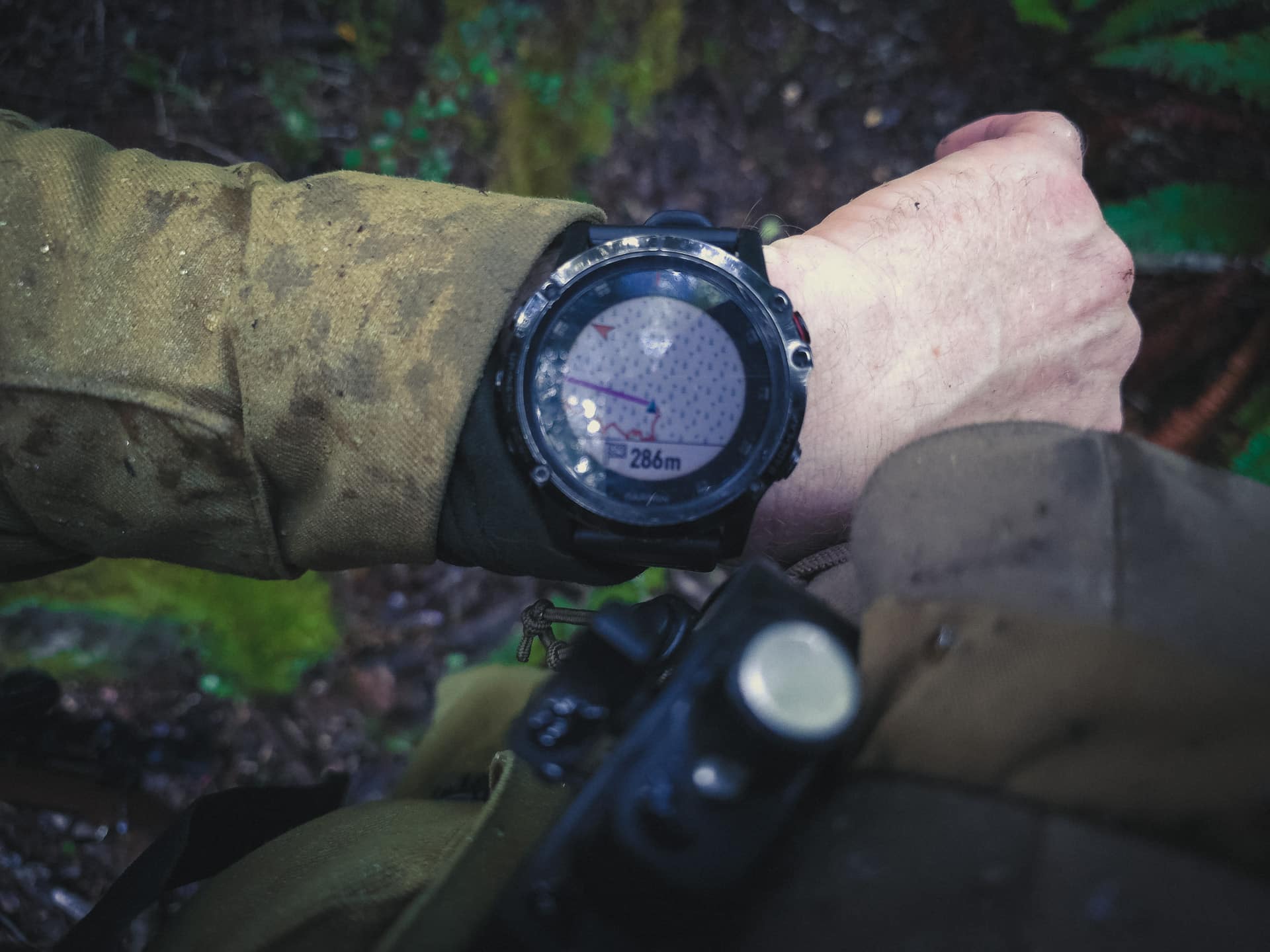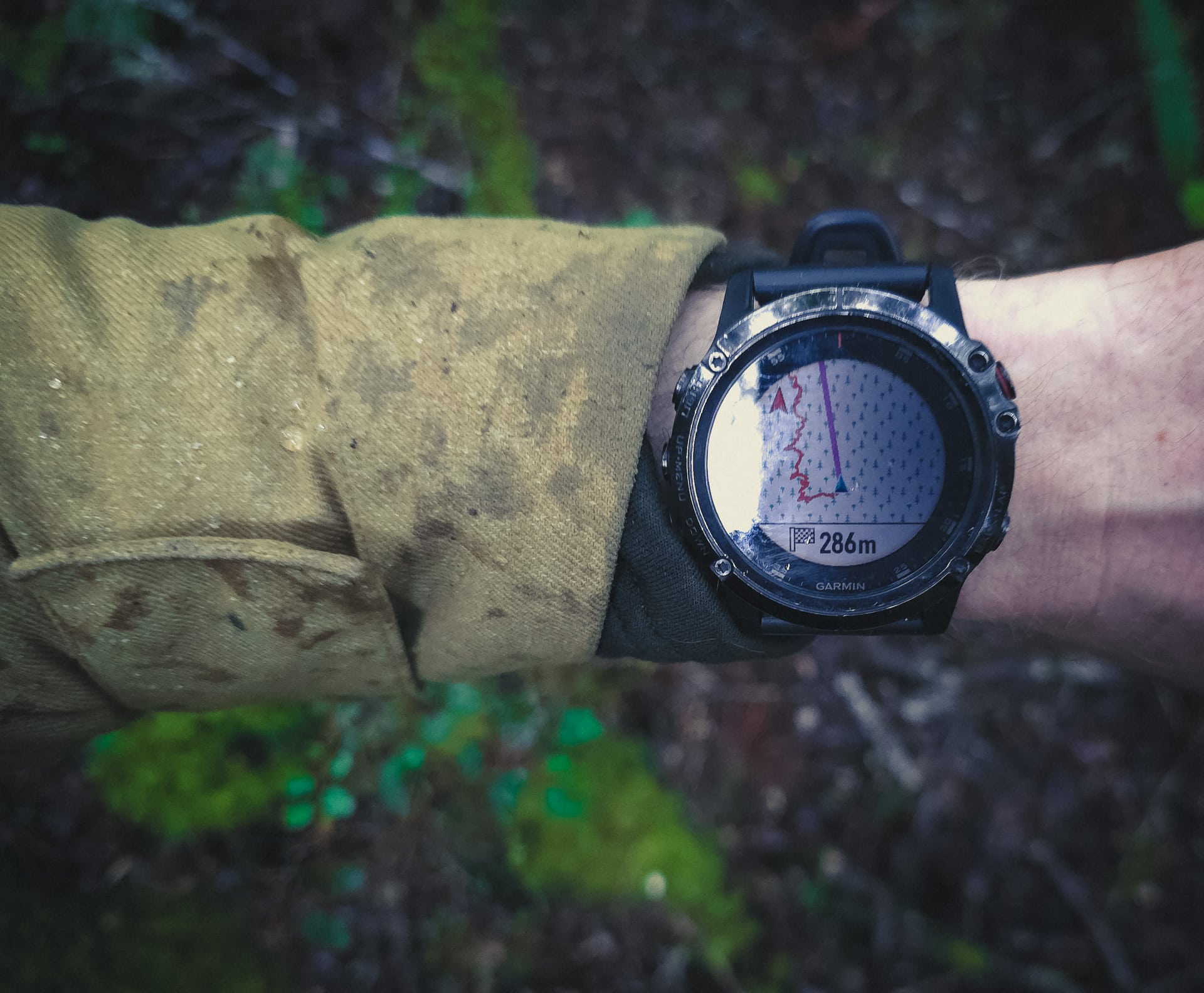“I let my concern about how other people react and think/feel about what I do push me away from my enjoyment of actually being in the moment and simply experiencing what I enjoy.”
The adventure began on a Friday night, as I found myself driving down Clements Mill Road, eager to reconnect with nature. My mind was set on embracing the peace and stillness that had eluded me for so long.
The Friday Night Hunt
As I made my way down Clements Mill Road that Friday night, it felt like I was reconnecting with an old, familiar friend. The landscape, drenched in the hues of dusk, held a certain tranquillity that seemed to resonate with the rhythms of my heartbeat. With the excitement of the hunt coursing through me, I couldn’t wait to step into the Kaimanawa Ranges and immerse myself in the wild again.
I managed to squeeze in a quick hunt before the light dimmed utterly. However, my eagerness was slightly hampered by a small oversight – I had forgotten my headlamp in the truck. This meant I needed to be back before darkness fully enveloped the forest, lending a palpable tension to the brevity of my excursion. Nonetheless, as I trekked through the underbrush, the familiar crunch of leaves underfoot and the symphony of nocturnal creatures emerging from their day-long slumber brought a deep sense of peace.
Wandering further, I discovered a trail that seemed promising. Making a mental note, I decided to explore this path the next day. Fate had something else in store for me that evening, though. I crossed paths with an elderly hunter, an old-timer with years etched into the lines on his face. At 71, he moved with the deliberate pace of someone who understood the forest’s secrets and rhythms far better than someone in a rush ever could. Ironically, his slowed pace had granted him recent success – he had managed to shoot a deer right off the road just 20 metres in.
Conversing with him was like tapping into a well of knowledge. I realised the richness of wisdom shared between hunters is a treasure. Our encounter was brief, but the connection felt substantial – a reminder that the spirit of community thrives even in the solitude of the wild. Saying our goodbyes, I headed back, light-hearted and reflective, looking forward to a night of rest and the promise of new adventures at dawn. A feed of my favourite Radix meal, and off to bed!
The next day…
Come Saturday morning, I awoke early, the excitement of a new day’s adventure propelling me out of my sleeping bag. I could still feel the dew’s chill from the previous evening’s outing, but this time I was prepared. I had some more Radix for breakfast (and why does bush-made coffee always taste the best?
I decided to ditch the barefoot shoes for my old trusty Lowas. Although they were reliable, they had their downsides. My feet felt encumbered, and fatigue set in much quicker than when I wore the more minimalist footwear.
Regardless, the thrill of the hunt and the serenity of the surroundings kept me in good spirits. The Kaimanawa Ranges were stunningly cloaked in morning mist, creating an almost ethereal atmosphere. I followed the trail from the previous night, knowing it would lead me deeper into the wilderness. As predicted, the old boy’s advice about the deer traffic in the area proved invaluable. The trail showed evidence of recent activity, and I felt a rush at the possibility of an encounter.
I proceeded slowly, every step calculated and cautious, in tune with the sounds of the forest waking up. My previously cumbersome rifle now rested easily in my hands, a testament to my improved physical condition. I marvelled at how my focus had sharpened. The restless urge to return to civilisation and “do stuff” was absent. Instead, my mind was tranquil, fully immersing me in the moment.
The rain began to set in by midday, a gentle reminder of nature’s unpredictable temperament. Knowing better than to push my luck with the equipment and gear I had, I decided to head back to camp. Despite the early retreat, the half-day hunt had been immensely fulfilling. Rather than a spoilsport, the rain accentuated the mood, providing an excuse to sit back and reflect on my experiences thus far.
I momentarily considered my life’s different paths to get me here. With the pressures of everyday life weighing down mental health and stifling passions, this short trip was not just a physical journey but a profoundly personal reconnection with myself. My appreciation for nature and the simple act of being in the wild, unburdened and mindful, made me realise how essential these moments were for my well-being.
Planning for the future, I made a mental note to include technology in my next outing. Discovering that thermals were now permissible on DOC land opened up new possibilities. Reflecting on past experiences where a thermal scope could have made a difference—like spotting that spooked animal sooner—filled me with excitement and anticipation for future hunts.
As I left the Kaimanawa Ranges, I felt a sense of calm and satisfaction that had been elusive in the past years. I even made time to visit the Kaimanawa Wall on my way out, a peaceful conclusion to a meaningful trip. Guiding some lost tourists to this intriguing historical site added a touch of altruism to the journey, underscoring the unexpected connections we make when we step out of our routines and into the wild.
The Barefoot Revolution: Hunting with Minimal Footwear
Wearing my barefoot shoes for the first time out on the hunt was both a revelation and a revelation. There’s something profoundly grounding about feeling the earth under your feet, every contour of the terrain translating through the soles, enhancing my connection with nature. Though, it was a bit of a hit-and-miss. They got very wet and cold, a reality check that Mother Nature doesn’t always play fair. Yet, the sensation was exhilarating—like being a part of the environment, not just a visitor.
The next day, it was back to my old trusty Lowas, and immediately, I felt the difference. The sense of freedom was gone, replaced by a noticeable fatigue in my feet and legs and the familiar ache in my back. It was like wearing two bricks compared to the featherweight comfort of barefoot shoes. This contrast highlighted how traditional hunting boots, while protective, can sometimes feel like a barrier to genuinely experiencing the environment. I became acutely aware of how different footwear choices could impact my comfort and the entire hunting experience.
It’s essential to find a balance between comfort and protection. In the colder months or wetter conditions, traditional insulated boots might be a necessity. However, for those crisp, dry days, the barefoot shoes offer a unique, almost primal connection to the hunt that I found incredibly rewarding. It’s clear now that choosing the proper footwear can significantly affect the physical endurance and mental clarity needed for a successful hunt.
This experience has prompted me to consider integrating lightweight, minimal footwear more often into my hunting gear, but always with a backup plan for harsher weather conditions. It’s an ongoing experiment, finding that sweet spot where you’re both comfortable and in tune with the surroundings. For anyone willing to try it, I’d recommend starting with short outings and gradually increasing the duration as your feet adapt. Trust me, when you strike the right balance, the sensation is unlike any other—an authentic connection to the wilderness that every hunter seeks.
Endurance and Fitness: Noticing Improvements in Strength and Stamina
Reflecting on this trip, I noticed remarkable physical endurance and overall fitness transformations. Unlike previous outings where my wrists and forearms would burn under a day’s weight of my rifle, this time, I moved through the forest with newfound strength and ease. The consistency of my training was evident; my legs propelled me forward with a resilient, steady rhythm, and my grip never wavered. My body had adapted and moulded itself into the perfect instrument for this rugged adventure.
Yet, this wasn’t just about physical strength but also a mental triumph. Not once did I feel overwhelmed or hurried to return to the comforts of town. Instead, I immersed myself fully in the experience, each step becoming a meditative practice in patience and resolve. The rain that settled in on Saturday didn’t dampen my spirits; instead, it felt invigorating, as if nature offered a cleansing reset.
There’s something profoundly satisfying about feeling your body rise to the occasion, meeting the challenges of the terrain with inner confidence. Carrying my rifle without a sling, I noticed how my arms and shoulders bore the weight with a quiet assurance. Gone were the days of gritting through discomfort; in its place, there was a sense of flow, a connection with my surroundings that stemmed from actual readiness and preparation.
As anyone who hunts knows, the physical demands are only part of the equation. The mental endurance to stay focused and alert is equally critical, especially when the weather turns. This trip reminded me that actual endurance is a harmonious blend of body and mind, a steadfast commitment to the hunt and the whispering wilderness that calls us back time and again.
A New Perspective: The Quiet Mind and Present Moment
The serenity of the Kaimanawa Ranges was a stark contrast to the usual hustle and bustle of everyday life. As I trekked through the dense bush, I was enveloped in a profound stillness that seemed to resonate with something deep within me. My mind began to settle into a peaceful rhythm without the constant distractions of modern life.
I couldn’t help but appreciate how different this felt compared to my previous hunts. In the past, my thoughts would bounce chaotically from one task to the next, consumed by what needed to be done back home or at work. This time, there was a noticeable shift – my mind was quieter and more attuned to the subtle sounds and movements of the forest.
This newfound presence allowed me to experience each moment more fully. The crunch of leaves underfoot, the distant call of a bird, and the scent of damp earth all seemed to sharpen my senses. I realised that by being completely present, I could better anticipate and react to the environment around me, making the hunt more enjoyable and successful.
This state of mindfulness didn’t come by accident. It resulted from intentional effort and self-awareness, something I had been working on in my therapy sessions. Learning to let go of external pressures and judgements had freed me to truly enjoy the moment and engage with my surroundings in a way I hadn’t been able to for years.
In many ways, this hunt became a metaphor for life itself. Just as in the forest, where being present allowed for a more intuitive and responsive experience, the same could be true in everyday life. Focusing on the here and now, rather than being lost in worries about the future or past, I found a renewed sense of clarity and purpose.
Reflecting on this, I felt a renewed sense of gratitude. The hunt had not just been an opportunity to track deer; it had been a chance to reconnect with myself and the simple joys life offers. It was a powerful reminder that sometimes, all it takes to quiet the mind and find peace is to immerse oneself in nature and be fully present in the moment.
A Therapeutic Journey: Conversations with My Therapist
During my latest session, we delved deep into the lingering impact of my trauma. It’s been a gradual process, uncovering layer by layer, but each step has brought more clarity. My therapist guided me to recognise a pattern, the way my anxieties about others’ perceptions have a remarkable ability to consume my thoughts. There, in the stillness of the session, it clicked: this incessant worry was robbing me of the joy of the present moment, whether during a hunt or daily life.
It was an enlightening revelation that didn’t just echo in the confines of those walls but accompanied me to the wild, untamed beauty of the Kaimanawa Ranges. The wilderness has a therapeutic quality, a space where I could apply these newfound insights. There’s something profoundly healing about the simplicity of putting one foot in front of the other, listening to the rhythms of nature, and allowing yourself to be fully immersed in the experience.
Amidst the trees and trails, I found the mental chatter starting to quiet. My thoughts, usually a relentless stream concerning work, relationships, and societal expectations, began to thin out. I started to let go of the ‘shoulds’ and ‘musts’ that typically dictated my actions. Instead, I asked myself, “What feels right now?”
A little learning with the Compass (in the watch)
I have a Garmin Fenix 5X, my faithful companion on many outdoor trips. I have previously written about how I use it to navigate – but – on this trip – I had a moment with it – as it turns out – it was caused by a simple little thing – a magnet.
As I lifted my wrist to read the compass on my watch, my brain alerted me that the south wasn’t where it should be. It was off by a significant amount. As I lifted my arm further to check settings, it shifted. Why?
A moment later, it dawned on me. On my bino chest pack, on the left-hand side, was my Spartan Bipod – sitting right on top of that? A small but strong magnet. Right next to where I naturally lifted my hand to check my watch!
Simple fix. Move the bipod over to the other side of the bino pack – and behold – south had shifted back to where it should be!
It was a small but enlightening discovery. Who would have thought that such a minor adjustment could have such a significant impact on my navigation? This moment was a gentle reminder of the importance of double-checking equipment and being open to learning and adapting in the field. I knew magnets affected compass operation. I didn’t register, so I had set it up to do it myself.
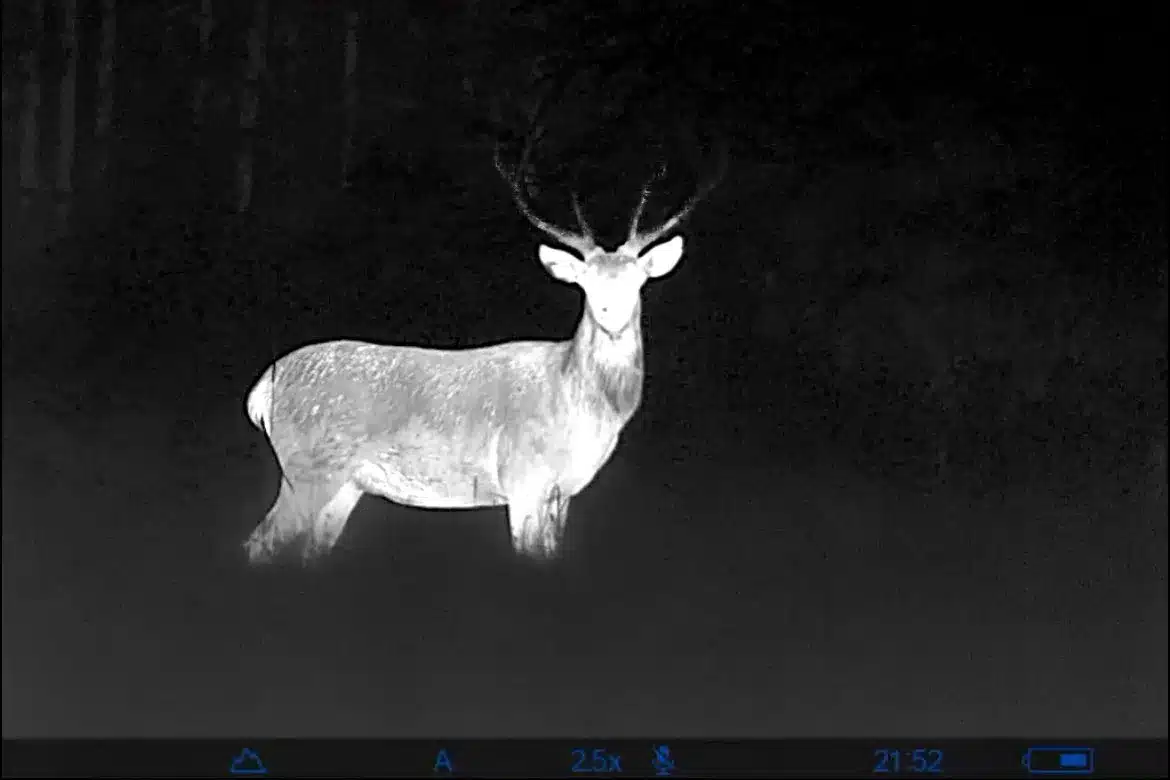
Technological Advancements: Using Thermals on DOC Land
This year, a significant shift occurred in the regulations governing public conservation land. The Minister For Hunting And Fishing announced that handheld thermal technology is now permitted during hunts on these lands. This change, covered in a recent statement, marks a crucial evolution in hunting practices, enhancing the hunter’s ability to detect and accurately target animals, particularly in the dense and challenging terrain typical of New Zealand’s conservation areas. Previously, such technology was reserved for pest control operations, but the new regulations also recognise the benefits for recreational hunters.
For those new to thermal imaging, it’s a game-changer. The technology works by detecting heat signatures emitted by living creatures, making it far easier to spot animals in low light conditions or through thick foliage. This innovation can improve the success rate of hunts and the safety of both hunters and wildlife. With thermals, hunters can more readily identify their targets, reducing the chances of accidental shootings and ensuring a more ethical approach to hunting.
Imagine trudging through the Kaimanawa Ranges before dawn, with heavy morning fog and visibility near zero. Without thermal tech, you might miss an animal standing mere metres away. But with it, you can see its warm outline vividly against the cooler backdrop, gaining precious moments to ready your approach. This tool can potentially elevate the hunting experience, combining ancient practices with cutting-edge technology to foster a deeper connection with the environment and a more mindful, efficient hunt.
Given this, I’ll keenly integrate this technology into my toolkit next time I’m venturing out. It’s a consideration that promises to enhance the prospects of the hunt and the overall immersion in the wild, nurturing that serene yet exhilarating balance of being both a participant and an observer in nature’s grand theatre.
- Hunting can be a therapeutic experience, helping to calm the mind and ground oneself in the present moment.
- Proper footwear is crucial for comfort and safety during hunting trips; wet or ill-fitting shoes can lead to discomfort and potential injury.
- Fitness improvements can enhance hunting experiences, making physical tasks easier and more enjoyable.
- Modern technological tools like thermals can significantly improve hunting efficiency and success, especially in dense or challenging terrains.
- Interacting with more experienced hunters can provide valuable knowledge and tips, often unearthing unconventional yet effective methods.

